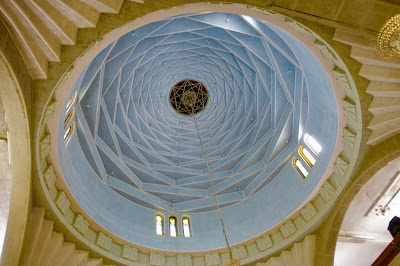Modernist architecture swept across much of Europe during the 1930's. Whilst many of the new buildings were commissioned by wealthy individuals, a number of cities adopted the style for social housing programmes. Prague, Vienna, Rotterdam and Stuttgart all developed modernist estates for working class families. Each of these developments were based on the main principles of modernism including the use of new materials, access to outside space and a clean, healthy environment. In some cases, local influences also played a part in design and a different name was given to the style, emphasising this. In Sweden, functionality was emphasised and the style tagged Functionalism or "Funks" in Swedish.
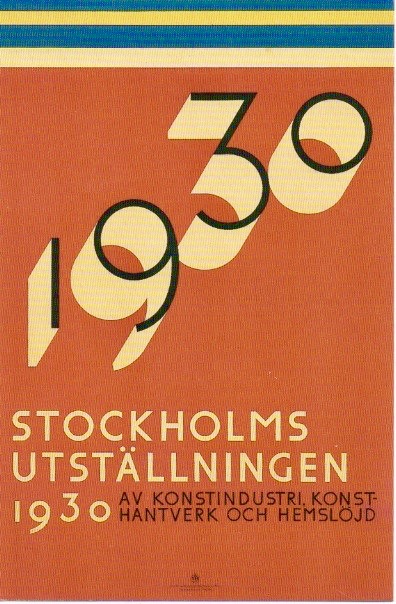
Swedish Modernism received its greatest stimulus in 1930 with the staging of the Stockholm Exhibition. Inspired by the 1927 Exhibition at the Weissenhof Estate in Stuttgart, the Stockholm event ran from May to September and showcased the work of contemporary Swedish artists, craftsmen and designers. A number of temporary buildings were constructed for the event under the direction of architects Gunnar Asplund and Sigurd Lewerentz. Asplund had only just abandoned his earlier neo-classical style in favour of a stripped down modernism, the style adopted for the Exhibition. As well as bringing Swedish design to an international audience, the event resulted in several commissions for modernist buildings.
A number of social housing units in and around Kungsklippan a street in the Kungsholmen neighbourhood were built just a few years after the Exhibition. There are some spectacular examples of Funkis on Kungsklippan itself as well as a series of high rise apartment buildings in the surrounding streets. The apartments were built from reinforced concrete and although small each one included a fitted kitchen, bathroom and a balcony, implementing the principles of using modern materials and providing a healthy environment. The first residents moved-in in 1934 and the Kungsklippan Housing Association was formed at the same time. It is now Sweden's second largest social housing organisation.
Sven Wallander was the architect responsible for developing most of the area as well as for designing many other buildings in the city.
 |
| Apartment building, Kungsklippen |
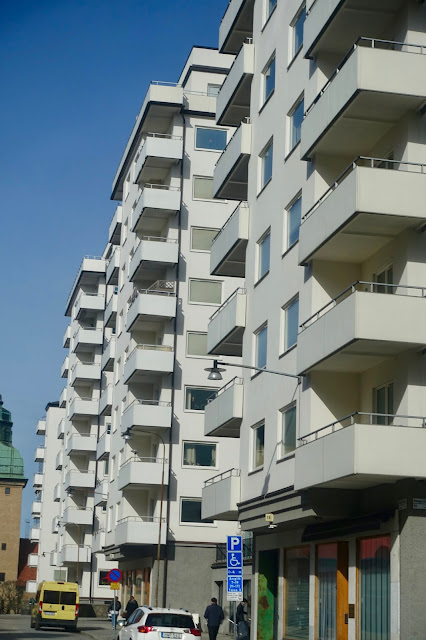 |
| Balconies, Kungsklippan |
John Ericssonsgatan is a short walk from Kungsklippan. Number 6 is home to Stockholm's first collective housing unit. Built in 1935, it was designed by architect Sven Markelius who worked with fellow Social Democrat Party member, Alva Myrdal to draw up not just an architectural plan but also a plan for living. The building included a communal dining room on the ground floor from which meals could be sent directly to individual apartments by means of a "dumb-waiter" lift system whilst residents could also benefit from the services of a 24 hour childcare service.
These services were part of Myrdal's strategy for enabling women to go to work and to become "productive" and avoid becoming "indolent, fat and self-absorbed". These ideas were set out in her book
Crisis in Population where she declared housework only fit for those who are
"...frail, imbecilic, lazy, unambitious, or generally less endowed...to get on with life". Myrdal herself chose not to live in a communal environment, preferring a house in the leafy suburb of Broma for her and her family. She was not the only one to have this preference and over time the working class families left the building to be replaced by bourgeois radicals, more likely to share her philosophy. Myrdal's radical views were not restricted to living arrangements. She also advocated compulsory sterilisation for the 10% least productive members of the population and is credited with influencing legislation introduced in 1934 that included forced sterilisation on eugenic principles. These laws were not repealed until 1975. She received a
Nobel Peace Prize in 1982.
Markelius also designed the Helsingborg Concert Hall in 1932, was nominated to the board of design consultants for the UN Secretariat building in 1952 and later worked as a city planner. he was awarded a gold medal by the Royal Institute of British Architects in 1962.
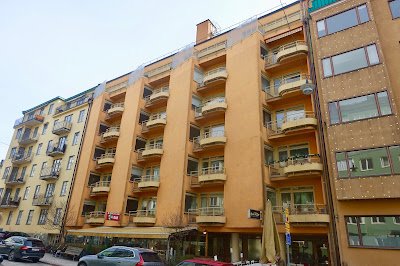 |
| Collective house, John Ericssonsgatan |
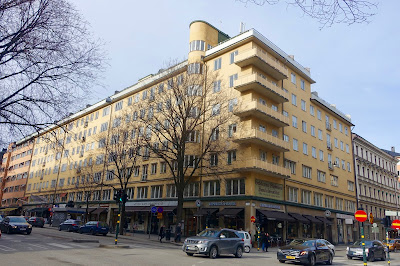 |
| Pahlman Institute, Sveavagen |
But back to the house. The building's striking orange facade has a series of four slightly recessed columns that give the impression of waves or folds depending on the angle from which it is viewed. Each flat has a rounded balcony and access to the still working dumb-waiter that delivers food from the very nice
Petite France restaurant located in the former communal kitchen on the ground floor. The simple stews and soups of the 1930's have been replaced with French patisserie and a menu that attracts the city's young professionals. It's funny how things turn out.
Sveavagen is a long boulevard that runs from Sergels Torg in the centre of the city to Haga Park in the north. Two wonderful examples of functionalism can be found there. Pahlman's training institute at 82-88 was built in 1930 and designed by Mauritz Dahlberg. This huge structure covers almost an entire block, with residential units above ground floor commercial premises. For the most part, the long facade is flat and austere but the at one corner there are five fabulous rectangular balconies and a curved, protruding tower running from the second floor to one above roof level. There are clear Bauhaus influences on this building. Pahlman's was established in 1881 as an institute for the teaching of business accountancy, marketing and writing, taking up residence here when construction was completed. Dahlberg studied at the Stockholm School of Engineering and was responsible for designing several buildings in the city in the 1930's and 40's.
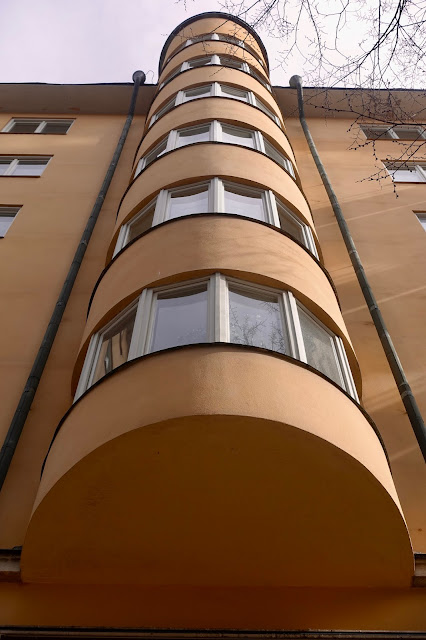 |
| Detail, Pahlman Institute. |
Sveavagen is also home to one of Stockholm's most iconic buildings and an early example of modernism which includes elements of functionalism and one or two Art Deco touches. The Stockholm Public Library was completed and opened in 1928. Designed by the already mentioned
Gunnar Asplund it is constructed in geometric forms with a cube surrounding a cylinder. The exterior siena-painted brick walls are topped with a decorative freeze carrying motifs of different library subjects and text in different languages. Asplund was also responsible for designing the terraces and the area surrounding the library, providing a link with nature.
The interior is stunning. A small lobby decorated with scenes from Homer's Iliad leads to a narrow staircase that draws visitors intro the spectacular rotunda - the circular book hall. The room holds about 40,000 volumes arranged on three levels. It is a breathtakingly beautiful site (especially to this former Librarian!) and a real palace for learning, literacy and literature. Many original features have been retained, including the furniture made from black linoleum, leather and mahogany and beautiful Art Deco drinking fountains in the two large subject rooms that flank the main hall. The children's library includes a small story room with a fresco painted by Nils Dardel depicting an imaginary scene.
Asplund has been acknowledged as the father of Swedish modernist architecture. He also designed the Skandia theatre, built in 1923 which has a largely classical facade (with the exception of the doors and external lighting) but sports a stunning Art Deco interior (closed at the time of my visit) and the
UNESCO World Heritage listed Woodland Cemetery, completed in 1920. The cemetery was a joint project with Sigurd Lewerentz.
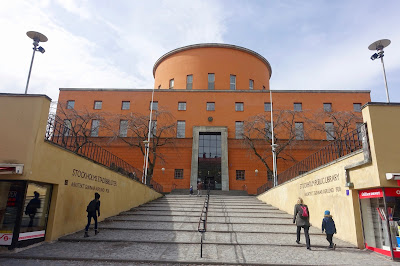 |
| Stockholm Public Library |
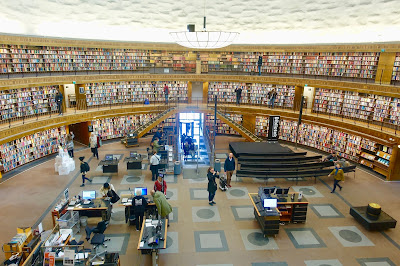 |
| The circular book hall |
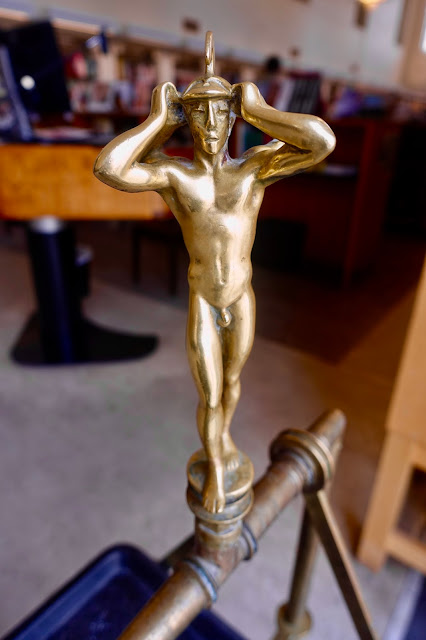 |
| Detail, subject room drinking fountain |
There are examples of the Funkis buildings all over the city. Their distinctive balconies make them easy to identify despite the range of styles used in this single decorative (yet functional) feature of their facades. These include neat semi-circles, rectangular balconies of various sizes with solid, mesh or corrugated guards. A little indulgence to finish with...
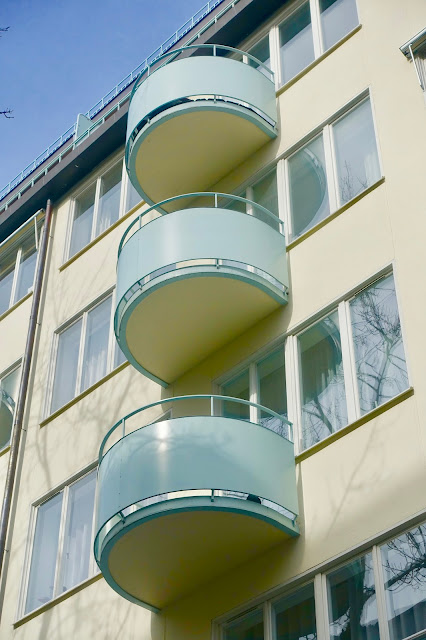 |
| Apartment block in central Stockholm |
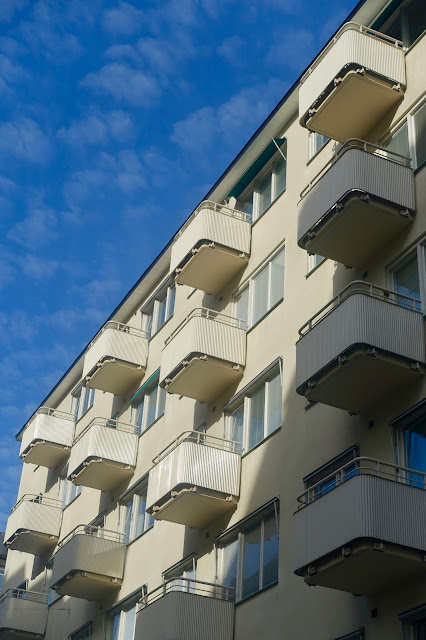 |
| Apartment block in Olaf Palme Street. |
 |
| Balconies in Kungsklippan |






